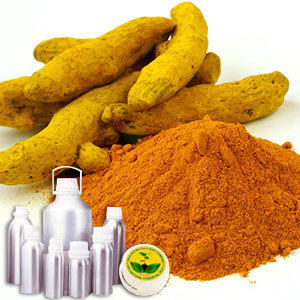Botonical Name | : | Curcuma Longa L | |
CAS # | : | 8024-37-1 | |
Country of Origin | : | India | |
Color & Odor | : | Pale yellow to reddish-brown oily liquid with Characteristic warm, spicy turmeric odor. | |
Solubility | : | soluble in oil & water | |
Specific Gravity | : | 0.925 – 0.935 @ 20°C | |
Optical Rotation | : | (-24) to (-27) @ 20°C | |
Refractive Index | : | 1.500 – 1.650 @ 20°C | |
Flash Point | : | 60 °C | |
Plant Part Used | : | Dry Root | |
Extraction Method | : | Steam distillation |
DESCRIPTION:
Water dispersible Curcumin (18%) is a solvent extract of turmeric rhizome. Apart from colorant it is an antioxidant and has typical turmeric like odour. It is also called Indian Saffron and has been used in Indian cooking for centuries. Processed from dried root part of the plant, which is grounded for extraction with the help of solvent, it is offered by us in water dispersible form. CONSTITUENTS:
Curcumin (yellow pigment) essential oil (artumerone, zingberene, borneol), alkaloids, valepotriates and protein. AROMATIC SUMMARY / NOTE / STRENGTH OF AROMA:
Characteristic Curcumin odor. BLENDS WITH:
Turmeric and curry powders. COMMON NAMES:
Indian Saffron. USES:
It is used in the beverages, sauces and confectionery industry. Further, it is also a very important herb in Indian Ayurvedic medicine. A symbol of prosperity, Turmeric has also been used for centuries in Indian traditional system of medicine as well as a spice and a natural food colour. Its anti-inflammatory and anti-oxidant properties also make it widely used in cosmetics, pharmacy, food supplements and as natural colors.


































